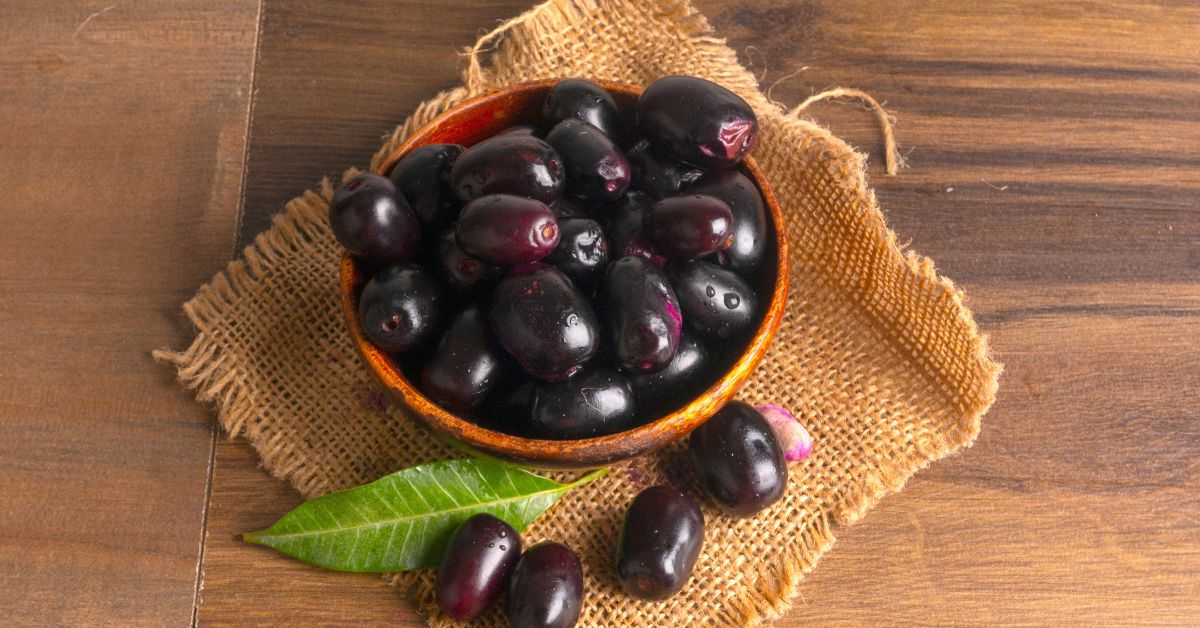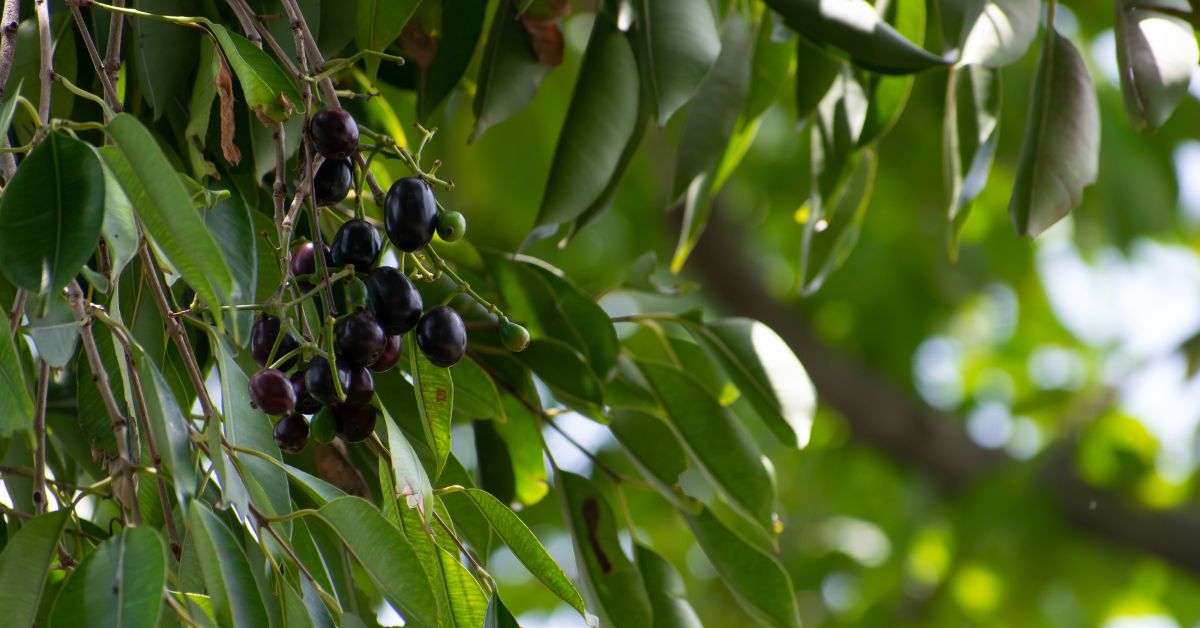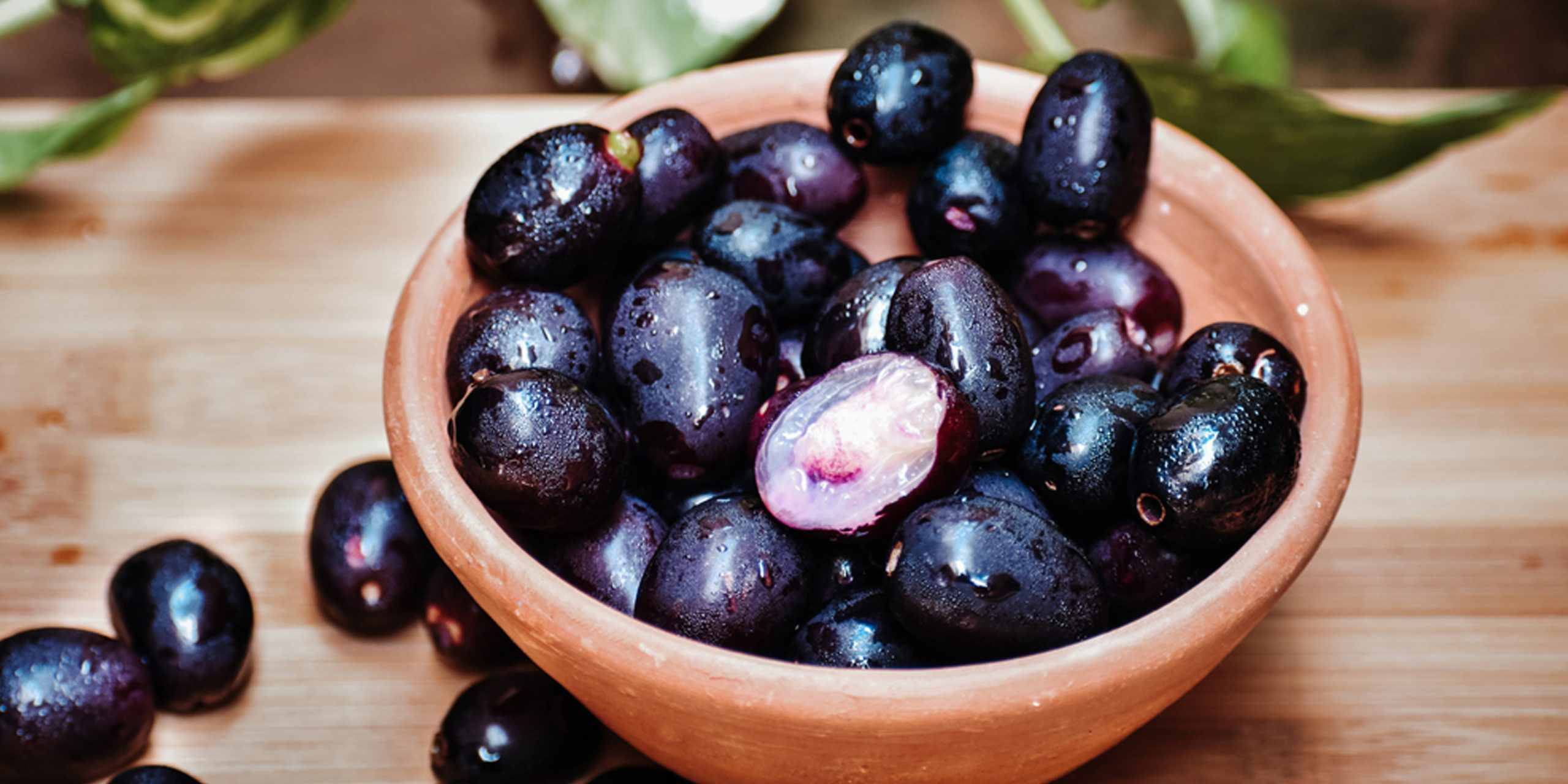If you’re looking to grow something this monsoon that isn’t just green but also gives back in more ways than one, consider this: Jamun, or Indian black plum. This might not be the flashiest fruit on the shelf, but it packs serious benefits.
It improves digestion, boosts immunity, helps manage blood sugar, and is even good for your skin. What’s more, it grows well in Indian conditions and thrives during the rainy season.
Here’s the twist: while Jamun trees are often associated with large farms or public parks, they can actually be grown in home gardens, backyards, or even in large pots on a balcony. Yes, it takes a few years to bear fruit, but if you start now, your future summers will thank you with juicy purple plums and a solid dose of health.

So, if you’ve been eyeing a long-term, low-maintenance fruit tree that works well with the Indian monsoon – Jamun might just be your new best friend.
1. Choose the right variety
India offers several varieties of Jamun, such as Ra-Jamun, Wild Jamun, and Seedless Jamun. For home growers, seedless or dwarf varieties are ideal. Check with your local nursery or horticulture centre for region-specific options.
2. Pick the perfect spot
Jamun trees love the sun. Choose a location that gets full sunlight for at least six to eight hours a day. If you’re growing it in a pot, place it on a terrace or balcony that’s sun-kissed but protected from heavy wind.
3. Use well-draining soil
Jamun can tolerate a variety of soils but thrives best in loamy, slightly acidic to neutral soil. Mix garden soil with compost and a bit of sand for proper drainage and nutrition.
4. Start from a seed or a sapling

You can grow Jamun from seeds by drying fresh seeds and planting them within 10–15 days. But for faster results, buying a grafted sapling from a nursery is recommended. These usually bear fruit in four to five years, compared to eight to 10 years from seed.
5. Planting at the right depth
If planting in the ground, dig a pit of about 1x1x1 ft. Place the sapling gently, cover it with soil mixed with organic compost, and water thoroughly. In pots, choose containers at least 18 inches deep and wide, and ensure drainage holes at the bottom.
6. Watering wisely
During monsoon, natural rainfall will suffice. But in dry spells, water deeply once every 3–4 days. Jamun doesn’t like waterlogged roots, so let the topsoil dry out before the next watering.
7. Feeding the tree
Use organic compost or well-rotted cow dung every two months in the growing season (June to September). Once a year, add a balanced fertilizer like NPK (10:10:10) to promote flowering and fruiting.
8. Pruning and shaping
Trim weak or dead branches during the dormant season (winter) to encourage a healthy structure. Light pruning helps sunlight reach inner branches and improves fruit quality.
9. Dealing with pests and diseases

Jamun is relatively pest-resistant, but aphids or fruit flies can occasionally attack. Use neem oil spray or homemade garlic-chilli spray once a month to keep pests at bay.
10. Jamun needs a lot of patience
Jamun trees take their time. Depending on whether you’ve planted from seed or a grafted sapling, the tree may start fruiting in four to eight years. But once it starts, you’ll have a summer bounty of sweet, astringent fruits packed with health benefits.
Key points to remember
Jamun loves the sun and thrives in full sunlight. To ensure healthy growth and fruiting, make sure your plant gets at least six hours of direct sunlight every day. Shady spots or indoor corners just won’t do — it needs light to photosynthesize efficiently and produce quality fruit.
1. Soil should drain well
Jamun trees do not appreciate wet feet! While they can adapt to different soil types, loamy or sandy-loam soil with good drainage is ideal. Waterlogged soil can lead to root rot and fungal infections. Mix in some sand or cocopeat if your garden soil tends to retain too much water.
2. Use grafted saplings for faster results
Growing Jamun from seed is possible but requires immense patience, as it can take eight to 10 years to fruit. Grafted saplings, however, are clones of mature trees and typically start bearing fruit in just four to five years. You’ll also have a better idea of fruit quality and tree size in advance.
3. Water less, not more
Jamun is a hardy, drought-tolerant tree. During the monsoon, natural rainfall is usually sufficient. Only water if there’s a dry spell or if you’re growing it in a container. Let the topsoil dry slightly before watering again. Overwatering, especially in pots, can stunt growth or damage the roots.
4. Fruits stain, but soothe
Yes, Jamun stains your tongue and hands a deep purple—but it’s worth it. The fruit is low in calories but high in antioxidants, Vitamin C, and iron. It helps regulate blood sugar levels, aids digestion, improves immunity, and even benefits skin health. It’s your very own medicinal fruit basket!
5. Grow health, not just a tree
Planting a Jamun tree is an act of slow, joyful patience. It won’t give instant gratification, but in a few years, you’ll have a personal source of antioxidants, immunity, and nostalgia (who doesn’t remember purple tongues in school?). So this monsoon, instead of just watching the rain, plant a little legacy. One fruit, one tree, one immune-boosting bite at a time.
Edited by Vidya Gowri Venkatesh
No comments:
Post a Comment